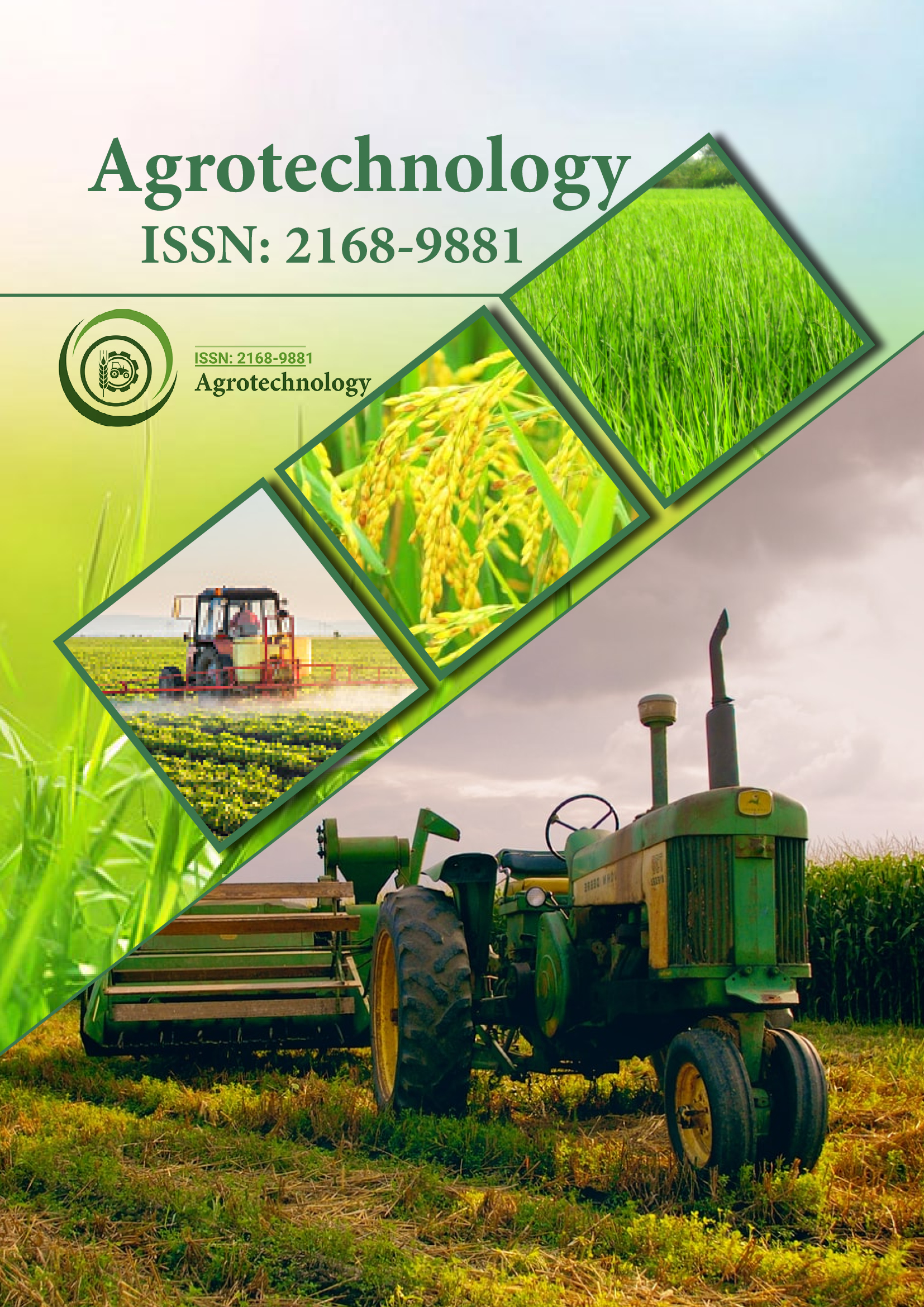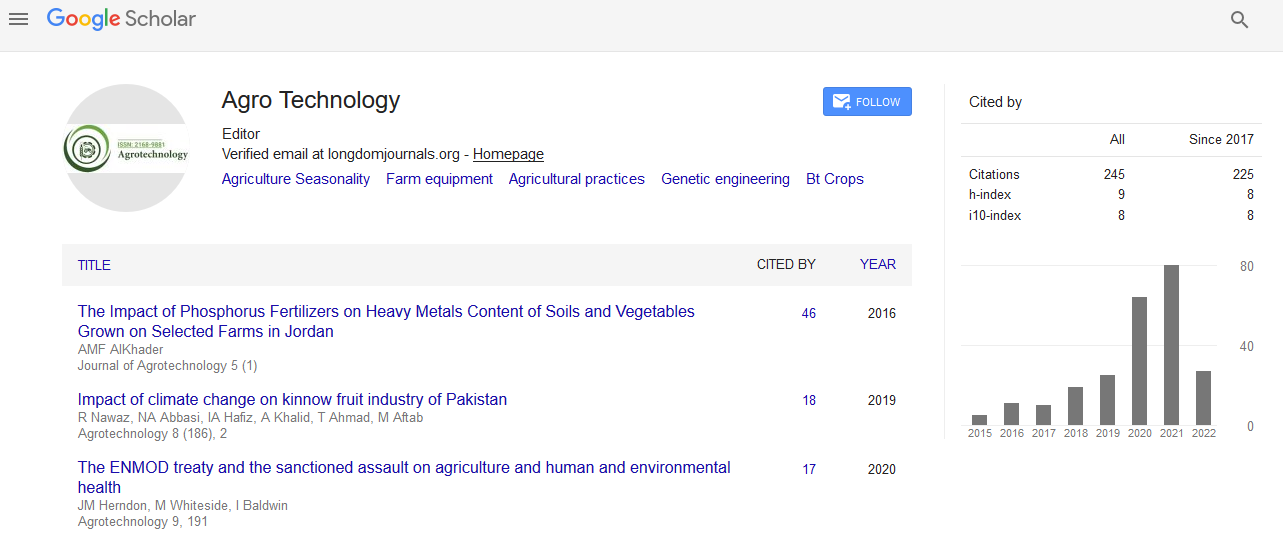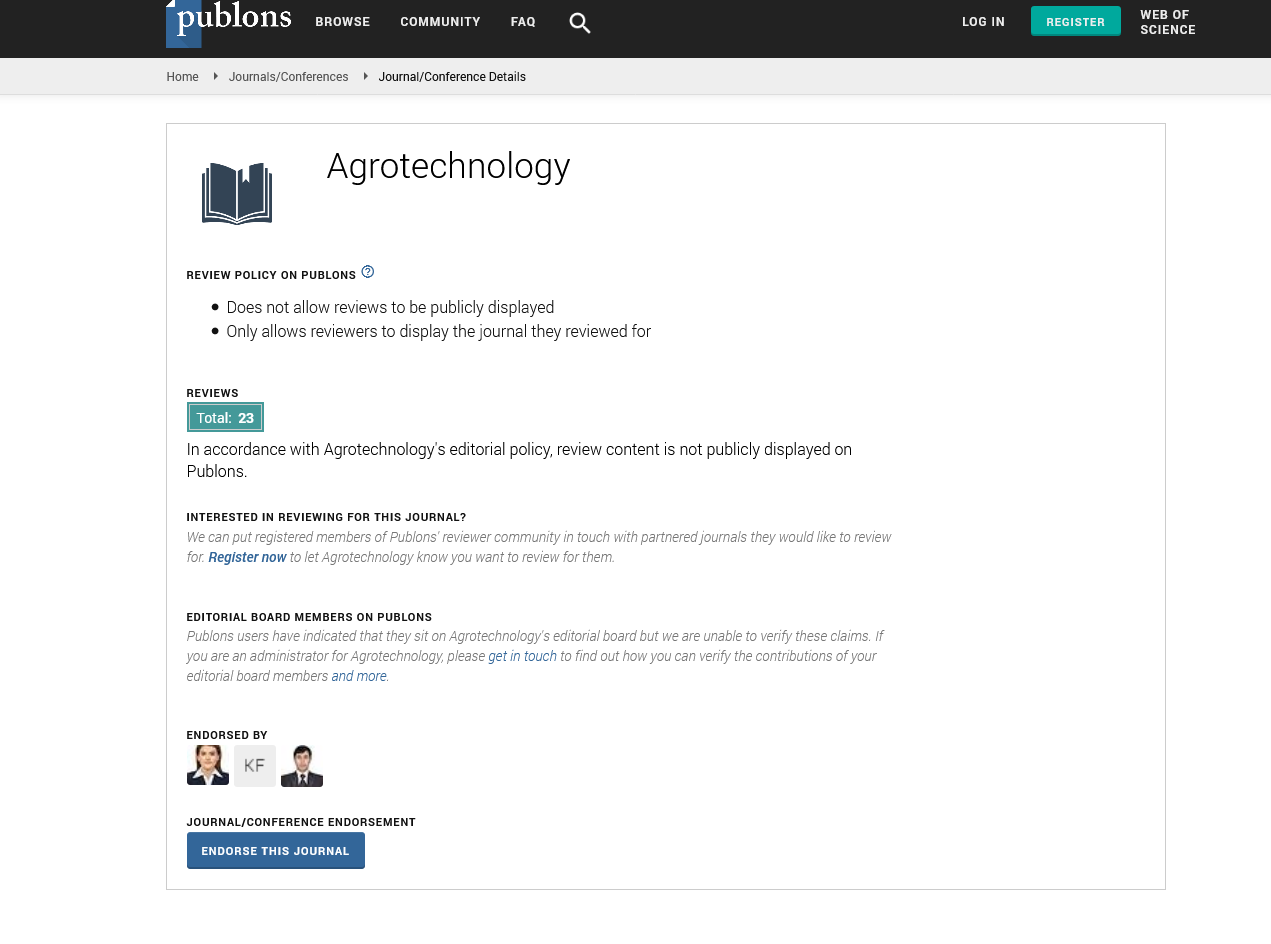Indexed In
- Open J Gate
- Genamics JournalSeek
- Academic Keys
- ResearchBible
- Cosmos IF
- Access to Global Online Research in Agriculture (AGORA)
- Electronic Journals Library
- RefSeek
- Directory of Research Journal Indexing (DRJI)
- Hamdard University
- EBSCO A-Z
- OCLC- WorldCat
- Scholarsteer
- SWB online catalog
- Virtual Library of Biology (vifabio)
- Publons
- Geneva Foundation for Medical Education and Research
- Euro Pub
- Google Scholar
Useful Links
Share This Page
Journal Flyer

Open Access Journals
- Agri and Aquaculture
- Biochemistry
- Bioinformatics & Systems Biology
- Business & Management
- Chemistry
- Clinical Sciences
- Engineering
- Food & Nutrition
- General Science
- Genetics & Molecular Biology
- Immunology & Microbiology
- Medical Sciences
- Neuroscience & Psychology
- Nursing & Health Care
- Pharmaceutical Sciences
Opinion Article - (2025) Volume 14, Issue 1
Genetic Dissection of Drought Resistance: Advancing Crop Resilience for a Changing Climate
Samuel Kwame*Received: 19-Feb-2025, Manuscript No. AGT-25-28745; Editor assigned: 21-Feb-2025, Pre QC No. AGT-25-28745 (PQ); Reviewed: 07-Mar-2025, QC No. AGT-25-28745; Revised: 14-Mar-2025, Manuscript No. AGT-25-28745 (R); Published: 21-Mar-2025, DOI: 10.35248/2168-9891.25.14.400
Description
The increasing unpredictability of climate change and the frequent occurrence of droughts threaten global food security and challenge conventional agricultural practices. Among the adaptive strategies, the genetic dissection of drought resistance emerges as a critical method for ensuring crop resilience and productivity under water-limited conditions. While breeding for drought resistance is not a new concept, recent advancements in genomics, phenomics and high-throughput screening technologies provide unprecedented opportunities to resolve complex traits and translate them into tangible crop improvements. However, despite the vast potential, the path from gene discovery to field application remains fraught with scientific and practical hurdles that demand a refined approach.
Genomic tools like Genome-Wide Association Studies (GWAS), Quantitative Trait Loci (QTL) mapping and transcriptome analysis have played instrumental roles in identifying candidate genes and regions associated with drought-related traits. For instance, transcription factors such as DREB, NAC and WRKY families have been widely recognized for their involvement in stress signaling pathways. However, identifying these genes is only the first step. Their utility in breeding programs depends on functional validation, stable expression across diverse environments and minimal trade-offs in other agronomic traits. This underlines the importance of integrating genomics with phenotyping platforms that capture traits dynamically under real or simulated drought conditions.
The promise of genome editing tools such as CRISPR/Cas9 adds another layer of precision to the process. Instead of relying on conventional breeding or transgenic approaches, genome editing enables targeted modifications of specific alleles responsible for drought resistance. This technology holds potential not just for improving elite cultivars, but also for enhancing underutilized or climate-resilient crops that have historically received less attention in mainstream research. Still, regulatory uncertainties and public perception regarding genetically edited crops remain barriers to the widespread adoption of such innovations.
An often underappreciated aspect of trait improvement is the importance of natural variation. Wild relatives of crops, landraces and traditional varieties are rich reservoirs of droughtresilient alleles. Incorporating this diversity through pre-breeding efforts can help create novel genotypes that are better suited for future climates. The use of genomic selection, which predicts performance based on genome-wide markers rather than individual loci, allows breeders to accelerate the development of such genotypes with greater efficiency. This becomes particularly relevant in breeding programs targeting marginal environments where drought is a recurring threat.
The conversation around drought resistance should also factor in sustainability and equity. While private sector investment in biotech crops is growing, public-sector research must continue to focus on crops and regions that are often overlooked. Investments in drought-resistant varieties should not be limited to major cereals like maize or rice, but also include legumes, millets and other staples that support smallholder livelihoods and regional diets. This broader perspective ensures that genetic advancements contribute to inclusive agricultural growth and not just too commercial success.
In conclusion, the genetic dissection of drought resistance stands as a cornerstone for climate-resilient agriculture. The tools to decode and improve complex traits are becoming more powerful, but the challenge lies in translating genetic knowledge into cultivars that deliver in farmers’ fields. A collaborative, multidisciplinary and inclusive approach is essential to unlock the full potential of drought-resistant crops. The urgency of the climate crisis leaves little room for incremental progress; bold and integrated strategies are needed to safeguard food production in an increasingly water-stressed world.
Citation: Kwame S (2025) Genetic Dissection of Drought Resistance: Advancing Crop Resilience for a Changing Climate. Agrotechnology. 14:400.
Copyright: © 2025 Kwame S. This is an open access article distributed under the terms of the Creative Commons Attribution License, which permits unrestricted use, distribution, and reproduction in any medium, provided the original author and source are credited.


